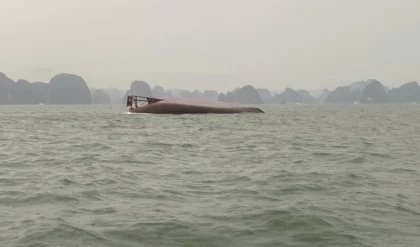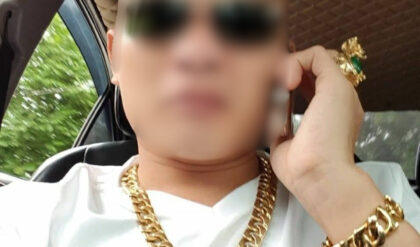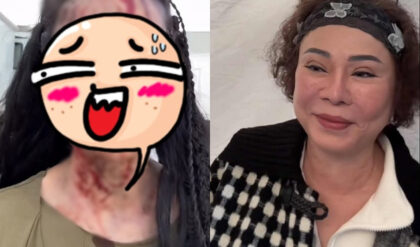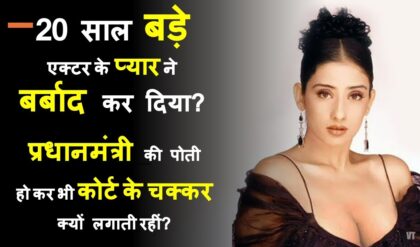Govinda, once a vibrant and spirited individual, found himself at the crossroads of despair and hope after a tragic accident that changed the course of his life forever. The incident that would alter his existence occurred on a seemingly ordinary day when a freak accident led to the loss of his leg. The event unfolded in a manner that left Govinda in shock, as he grappled with the reality of his new situation. One moment he was living his life to the fullest, and the next, he was confronted with a profound sense of loss and vulnerability.
The days following the accident were filled with a whirlwind of emotions. Govinda experienced a breakdown that no one could have anticipated. The loss of a limb is not merely a physical change; it is a drastic reshaping of one’s identity. He felt as if a part of him had been severed, not just physically but emotionally as well. Friends and family rallied around him, providing support, but the internal battle he faced was one that few could truly understand. The once lively man found himself trapped in a cycle of grief, anger, and disbelief.
During his time in the hospital, Govinda underwent numerous surgeries and treatments. The medical staff worked tirelessly to stabilize his condition, but the mental and emotional toll was equally demanding. As he lay in his hospital bed, he often found himself reflecting on the dreams he had for his future. The aspirations he held close to his heart seemed to slip further away with each passing day. The thought of never being able to walk, run, or dance again haunted him relentlessly. It was during this time of darkness that he began to realize the importance of mental health in recovery.
Govinda’s recovery journey was not solely about physical rehabilitation; it involved a deep psychological transformation. He began attending therapy sessions, where he learned to confront his feelings instead of suppressing them. The therapist guided him through the stages of grief, helping him to understand that mourning the loss of his leg was a natural and necessary process. Through these sessions, he started to express his feelings of anger, sadness, and confusion, which initially felt insurmountable. He discovered the power of vulnerability and began to open up to his loved ones about the struggles he faced.
As weeks turned into months, Govinda slowly started to adapt to his new reality. The support of his family and friends played a crucial role in his healing process. They encouraged him to engage in activities that brought him joy, despite the limitations he faced. He began to explore new interests, including adaptive sports and hobbies that could accommodate his condition. This exploration became a source of empowerment, allowing him to reclaim a sense of agency over his life. The emotional support he received from his community fostered a sense of belonging that became essential to his recovery.
In the midst of his physical and emotional challenges, Govinda faced an additional hurdle: a gunshot wound he sustained during the incident that caused his leg loss. This new injury added layers of complexity to his healing process. The pain from the gunshot wound was excruciating, and the psychological impact of the trauma was equally debilitating. The combination of both injuries left him feeling overwhelmed and isolated. However, he found solace in the resilience of the human spirit. He began to understand that recovery is not linear and that setbacks are a natural part of the healing journey.
With the help of physical therapists, Govinda embarked on a rigorous rehabilitation program. The focus was on building strength, improving mobility, and learning to navigate the world with a prosthetic leg. Each small victory, whether it was taking a few steps or regaining some independence, became a celebration of his progress. Govinda learned to appreciate the value of patience and persistence. He often found inspiration in stories of others who had overcome similar challenges, which fueled his determination to keep moving forward.
As he progressed with his rehabilitation, Govinda also began to shift his mindset. Instead of viewing his injuries as debilitating, he started to see them as opportunities for growth and transformation. He became an advocate for others facing similar challenges, sharing his story to inspire those who might be struggling with their own battles. This newfound purpose gave him a sense of direction and fulfillment. He realized that by helping others, he could also help himself heal.
Throughout his recovery, Govinda discovered the importance of self-compassion. He learned to forgive himself for moments of weakness and to accept that healing takes time. The journey was fraught with ups and downs, but he embraced each step as part of a larger narrative of resilience. This shift in perspective allowed him to cultivate a deeper sense of gratitude for the things he still had: his supportive network, his passion for life, and the ability to find joy in the little things.
As Govinda continued to heal, he also began to reconnect with his passions. He had always loved music and dance, and although he faced physical limitations, he found ways to express himself creatively. He started attending adaptive dance classes, where he discovered a community of individuals who shared similar experiences. Through music and movement, he found a renewed sense of freedom and joy that transc
Watch video:





